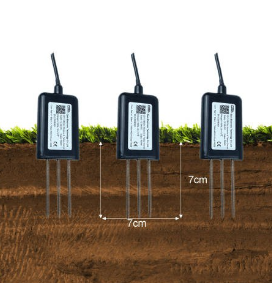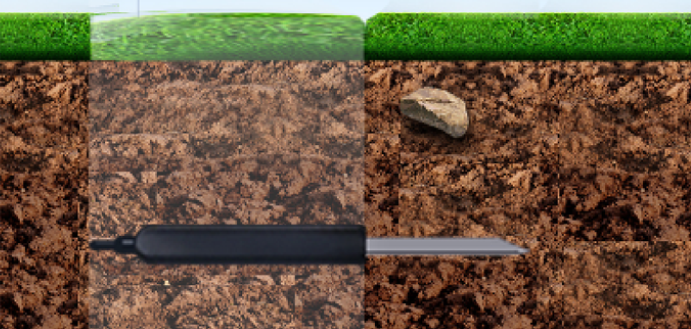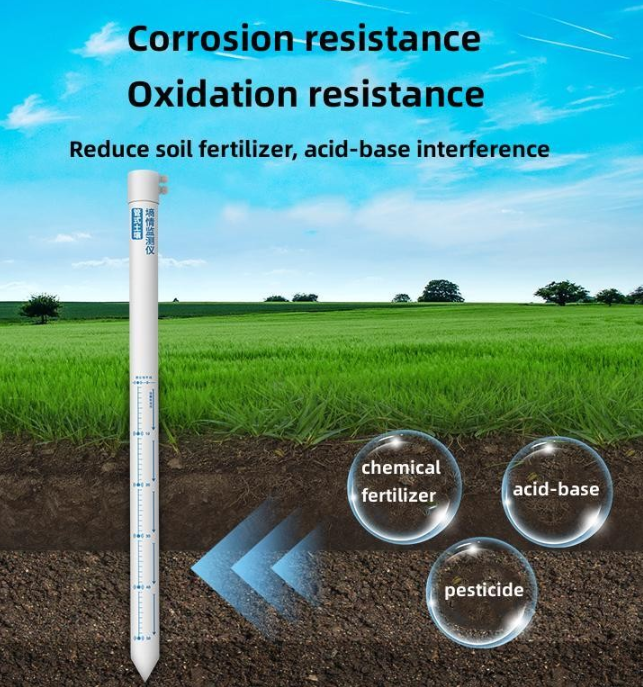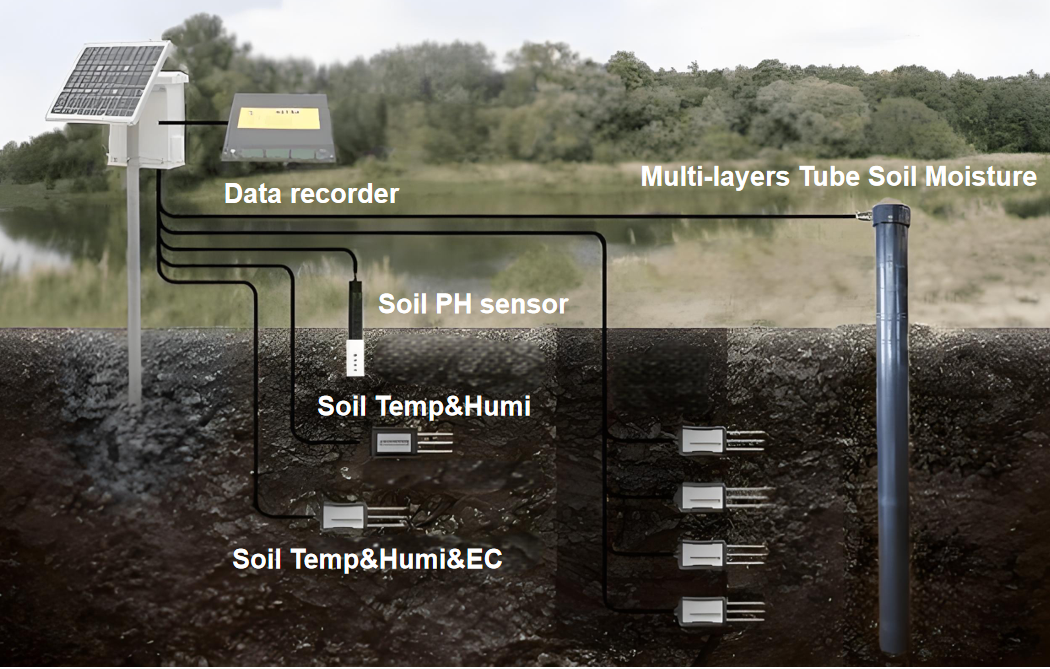In today's agricultural field, the power of science and technology is becoming increasingly prominent, among which the application of sensors in soil cultivation plays a crucial role.
Soil cultivation is the basis of agricultural production, and understanding the condition of the soil is the key to efficient cultivation. Sensors provide us with powerful tools to gain insight into the soil.



CDT-17B Soil PH CDT-22B Soil Temp&Humi Soil NPK Sensor
Temperature is important for the biological activity in the soil and for the growth and development of crops. Suitable soil temperature can promote seed germination, root growth and nutrient absorption. The soil temperature sensor can monitor the change of soil temperature in real time and provide accurate data reference for growers. For example, in early spring, with soil temperature sensors, growers can determine the best planting time. When the soil temperature reaches the suitable germination temperature of specific crops, the germination rate and emergence uniformity of seeds can be greatly improved. In the cold winter, for some crops that need to overwinter, growers can take measures such as covering insulation materials according to the data of soil temperature sensors to prevent freezing damage to crops caused by too low soil temperature.
Humidity is also a key factor affecting crop growth. Soil moisture sensors accurately measure the amount of water in the soil. In the planting process, if the soil moisture is too high, it will lead to poor soil ventilation, affect the respiration of roots, and easily lead to root diseases. The soil moisture is too low, it will make the crop water shortage, slow growth and even wither. With soil moisture sensors, growers can tailor irrigation to actual conditions.
Soil conductivity reflects important information such as the content of salt in the soil and the fertility of the soil. With soil conductivity sensors, growers can know exactly how salinized the soil is. If the soil conductivity is too high, it indicates that the soil salt content is large, which may have serious adverse effects on the growth of crops, such as inhibiting seed germination, hindering root growth, reducing crop yield and quality. In some coastal areas or in farmland with unreasonable irrigation, growers can use soil conductivity sensors to monitor soil salinization in time and take corresponding improvement measures, such as reasonable irrigation and application of amendments, to reduce soil salinity and create a suitable growth environment for crops.

Soil pH value directly affects the availability of nutrients in the soil and the activity of microorganisms, which in turn profoundly affects the growth and development of crops. With soil pH sensors, growers can accurately measure the pH of the soil. When the pH value of the soil is too high or too low, it will limit the absorption of certain nutrients, resulting in crop deficiency symptoms. For example, in acidic soils, the solubility of elements such as aluminum and manganese increases, which may be toxic to crop roots. However, in alkaline soil, the availability of trace elements such as iron and zinc is reduced, which is easy to cause crop deficiency disease.
Soil nitrogen, phosphorus and potassium sensor can accurately detect the content of nitrogen, phosphorus and potassium in soil in real time. With these key nutrient data in hand, growers can make more precise fertilization plans. You can determine the type and amount of fertilizer you need based on the actual nutrient status of the soil to avoid over-fertilization or under-fertilization. For example, when sensors indicate low nitrogen levels in the soil, you can target nitrogen fertilizer to increase crop growth and yield; If the content of phosphorus and potassium is sufficient, the input of the corresponding fertilizer can be reduced and the planting cost can be reduced.

Soil sensor Installation Guide
Soil Surface measure method
1. Select a representative soil environment to clean up surface debris and vegetation
2. Insert the sensor vertically and completely into the soil
3. If there is a hard object, the measurement location should be replaced and re-measured
4. For accurate data, it is recommended to measure multiple times and take the average

Buried measure method
1. Make a soil profile in the vertical direction, slightly deeper than the installation depth of the bottommost sensor, between 20cm and 50cm in diameter.
2. Insert the sensor horizontally into the soil profile
3. After the installation is completed, the excavated soil is backfilled in order, layered and compacted, and horizontal installation is guaranteed.
4. If you have the conditions, you can put the removed soil in a bag and number it to keep the soil moisture unchanged, and backfill it in reverse order.

1. Factors affecting installation density
Types of cultivated crops
For crops with shallow roots, such as some leafy vegetables, the installation density can be relatively low because their absorption of soil nutrients and water is mainly concentrated in the shallower soil layer. In general, 5-10 sensors can be installed per hectare to monitor the basic condition of the soil.
For crops with deeper roots, such as trees and large trees, more intensive monitoring is needed because their roots are widely distributed and penetrate deep into the soil. It may be necessary to install 10-15 sensors per hectare to ensure an accurate understanding of soil conditions at different depths.
2.Size of planting area
Small planting areas (such as home gardens, small farms), due to relatively uniform soil conditions, installation density can be appropriately reduced. It is usually enough to install one sensor every 100-200 square meters.
In large planting areas (such as large farms and agricultural parks), the soil difference may be large, and the installation density should be appropriately increased in order to grasp the soil condition more comprehensively. Generally, 8-12 sensors can be installed per hectare.
3.Soil type and topographic variation
If the soil type is single and the terrain is relatively flat, the sensor installation density can be relatively low. Because in this case, the distribution of nutrients and water in the soil is relatively uniform, there are fewer local differences.
For areas with complex soil types (such as a mix of sand, clay, and loam) or more undulating terrain, the physical properties and nutrient content of the soil may vary widely, requiring more intensive installation. For example, in hilly areas or areas where soil texture changes frequently, 10-15 sensors per hectare may be required.
4.Monitoring accuracy requirement
If the monitoring accuracy of soil conditions is required to be high, such as for scientific research, precision agriculture demonstration projects, etc., the installation density should be increased accordingly. Depending on the specific research purpose and accuracy requirements, more than 15 sensors per hectare can be installed, and even intensive installation in key areas.
For general agricultural production management, the monitoring accuracy requirements are relatively low, and the installation density can be appropriately reduced

Mushroom cultivation requires a carefully contro
In today's fast-evolving agricultural landscape,
Coffee bean cultivation is highly dependent on s
Contact: Molly
Phone: +86-17775769236
Tel: 86-0731-85117089
Email: molly@codasensor.com
Add: Building S5, Aux Square, Yuelu District, Changsha City, Hunan Province, China
We chat